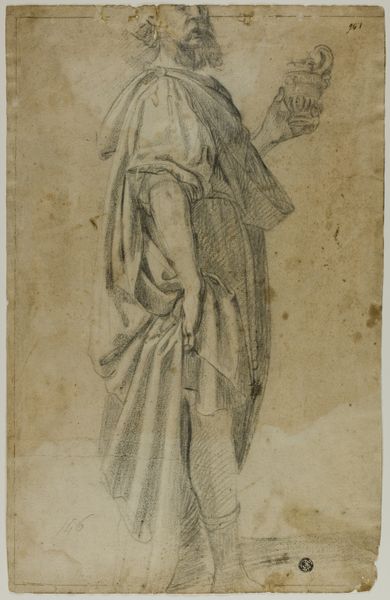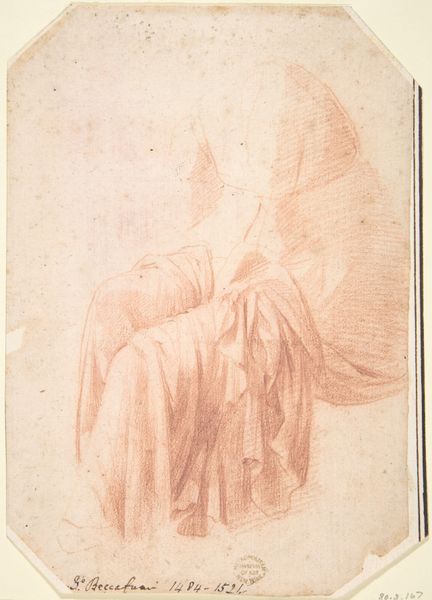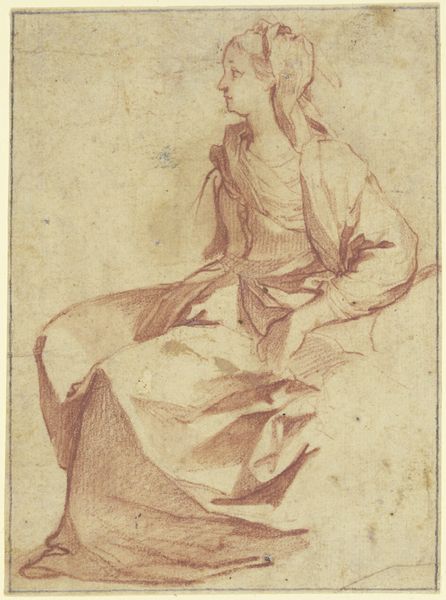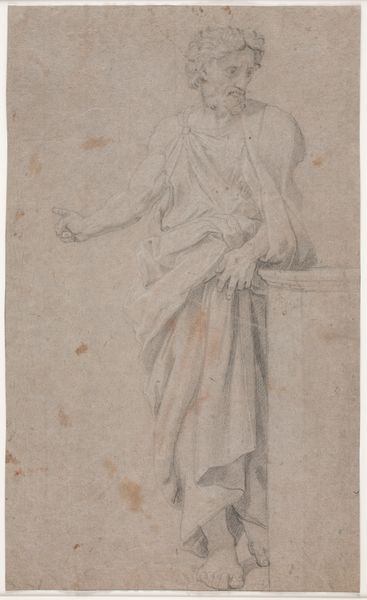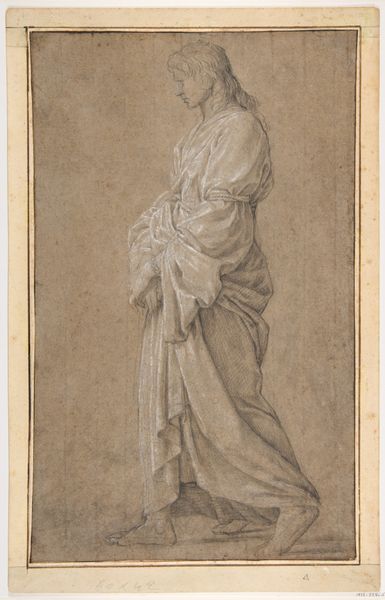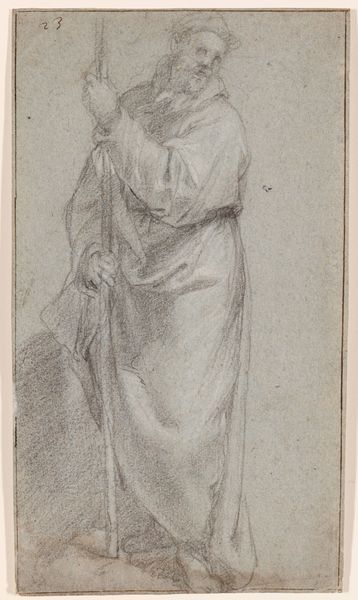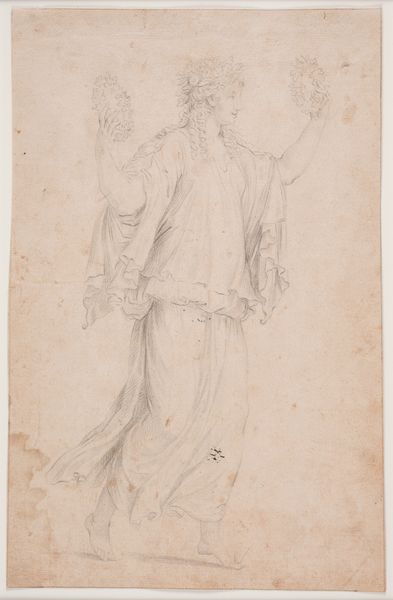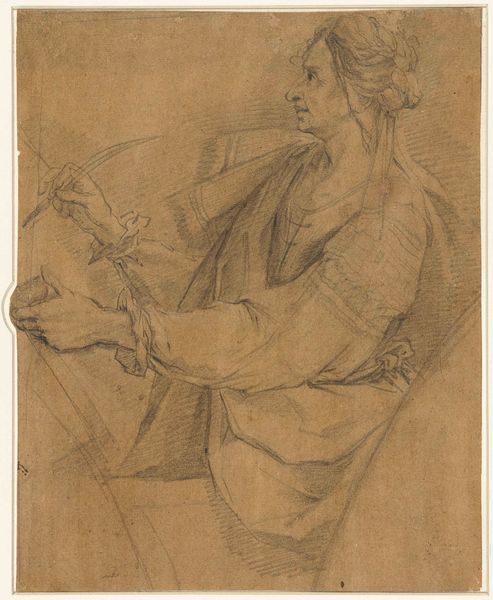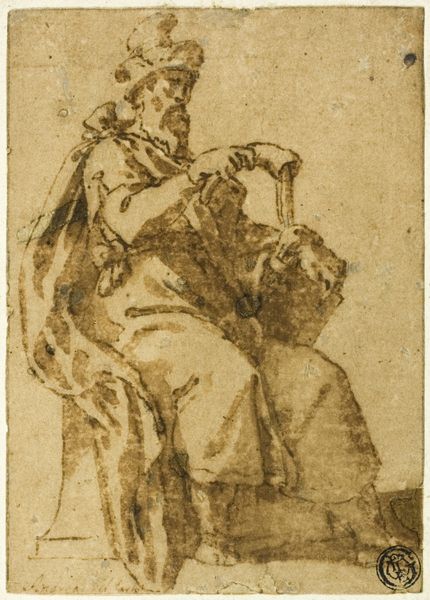
Første studie til billedet med kvinderne ved fontæ i A. 1845
0:00
0:00
drawing, pencil
#
portrait
#
drawing
#
charcoal drawing
#
pencil drawing
#
romanticism
#
pencil
#
academic-art
#
realism
Dimensions: 334 mm (height) x 240 mm (width) (bladmaal)
Curator: Elisabeth Jerichau Baumann’s "First Study for the Painting with Women by the Fountain in A." drawn in 1845 using pencil, gives us a glimpse into the artist's process. What are your immediate impressions of this work? Editor: There's a quiet solemnity here. The woman, depicted in profile, almost blends with the light around her. The draping fabric hints at both concealment and revelation. I immediately wonder about her role. Curator: It's compelling how Baumann engages with Romantic and Realist styles in portraying this figure. We need to consider how she, as a woman artist, negotiates representations of women within a 19th-century Danish art world. What sociopolitical statements can we unpack from this image? Editor: The head covering and simple dress could suggest piety or possibly servitude. There's an intriguing sense of timelessness that this could represent aspects of womanhood across cultures or maybe evoke Mary at the time of the annunciation if you read a halo effect in the sketch lines behind her head. What symbols may the fountain allude to in its finished painting? Curator: It invites critical questions about female identity and agency. We must contextualize it against prevailing societal norms and Baumann’s personal experiences as a woman artist navigating her career. It also invites debate surrounding class and labor within 19th-century social structures. Editor: This study also raises questions of motherhood through these archetypal poses and her gaze turned slightly upwards creates associations of piety and reverence but simultaneously the lines create the portrait of an aged or overworked woman. Curator: It encourages us to think critically about art historical representations, gender studies, and class. Editor: Exactly, and to consider the lasting resonance of these universal motifs in contemporary understanding of historical narrative and cultural values. In many ways, her story continues to shape us all.
Comments
No comments
Be the first to comment and join the conversation on the ultimate creative platform.
